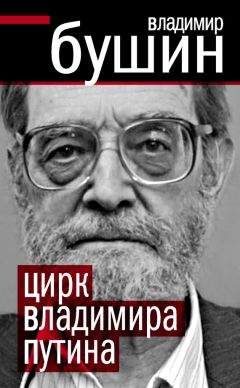Steven Dubner - Freakonomics
He and Jeannette had joined a support group for grieving parents. Levitt was struck by how many children had drowned in swimming pools. They were the kind of deaths that don’t make the newspaper—unlike, for instance, a child who dies while playing with a gun.
Levitt got curious, and went looking for numbers that would tell the story. He wrote up the results as an OpEd for the Chicago Sun-Times. It featured the sort of plangent counterintuition for which he has become famous: “If you both own a gun and have a swimming pool in the backyard, the swimming pool is about 100 times more likely to kill a child than the gun is.”
—THE N EW Y ORK T IMES M AGAZINE, AUGUST 3, 2003
5
What Makes a Perfect Parent?
Has there ever been another art so devoutly converted into a science as the art of parenting?
Over the recent decades, a vast and diverse flock of parenting experts has arisen.
Anyone who tries even casually to follow their advice may be stymied, for the conventional wisdom on parenting seems to shift by the hour. Sometimes it is a case of one expert differing from another. At other times the most vocal experts suddenly agree en masse that the old wisdom was wrong and that the new wisdom is, for a little while at least, irrefutably right. Breast feeding, for example, is the only way to guarantee a healthy and intellectually advanced child—unless bottle feeding is the answer. A baby should always be put to sleep on her back—
until it is decreed that she should only be put to sleep on her stomach. Eating liver is either a) toxic or b) imperative for brain development. Spare the rod and spoil the child; spank the child and go to jail.
In her book Raising America: Experts, Parents, and a Century of Advice About Children, Ann Hulbert documented how parenting experts contradict one another and even themselves. Their banter might be hilarious were it not so confounding and, often, scary. Gary Ezzo, who in the Babywise book series endorses an “infant-management strategy” for moms and dads trying to
“achieve excellence in parenting,” stresses how important it is to train a baby, early on, to sleep alone through the night. Otherwise, Ezzo warns, sleep deprivation might “negatively impact an infant’s developing central nervous system” and lead to learning disabilities. Advocates of “co-sleeping,” meanwhile, warn that sleeping alone is harmful to a baby’s psyche and that he should be brought into the “family bed.” What about stimulation? In 1983 T. Berry Brazelton wrote that a baby arrives in the world “beautifully prepared for the role of learning about him-or herself and the world all around.” Brazelton favored early, ardent stimulation—an “interactive” child. One hundred years earlier, however, L. Emmett Holt cautioned that a baby is not a “plaything.”
There should be “no forcing, no pressure, no undue stimulation” during the first two years of a child’s life, Holt believed; the brain is growing so much during that time that overstimulation might cause “a great deal of harm.” He also believed that a crying baby should never be picked up unless it is in pain. As Holt explained, a baby should be left to cry for fifteen to thirty minutes a day: “It is the baby’s exercise.”
The typical parenting expert, like experts in other fields, is prone to sound exceedingly sure of himself. An expert doesn’t so much argue the various sides of an issue as plant his flag firmly on one side. That’s because an expert whose argument reeks of restraint or nuance often doesn’t get much attention. An expert must be bold if he hopes to alchemize his homespun theory into conventional wisdom. His best chance of doing so is to engage the public’s emotions, for emotion is the enemy of rational argument. And as emotions go, one of them—fear—is more potent than the rest. The superpredator, Iraqi weapons of mass destruction, mad-cow disease, crib death: how can we fail to heed the expert’s advice on these horrors when, like that mean uncle telling too-scary stories to too-young children, he has reduced us to quivers?
No one is more susceptible to an expert’s fearmongering than a parent. Fear is in fact a major component of the act of parenting. A parent, after all, is the steward of another creature’s life, a creature who in the beginning is more helpless than the newborn of nearly any other species. This leads a lot of parents to spend a lot of their parenting energy simply being scared.
The problem is that they are often scared of the wrong things. It’s not their fault, really. Separating facts from rumors is always hard work, especially for a busy parent. And the white noise generated by the experts—to say nothing of the pressure exerted by fellow parents—is so overwhelming that they can barely think for themselves. The facts they do manage to glean have usually been varnished or exaggerated or otherwise taken out of context to serve an agenda that isn’t their own.
Consider the parents of an eight-year-old girl named, say, Molly. Her two best friends, Amy and Imani, each live nearby. Molly’s parents know that Amy’s parents keep a gun in their house, so they have forbidden Molly to play there.
Instead, Molly spends a lot of time at Imani’s house, which has a swimming pool in the backyard. Molly’s parents feel good about having made such a smart choice to protect their daughter.
But according to the data, their choice isn’t smart at all. In a given year, there is one drowning of a child for every 11,000 residential pools in the United States.
(In a country with 6 million pools, this means that roughly 550 children under the age of ten drown each year.) Meanwhile, there is 1 child killed by a gun for every 1 million-plus guns. (In a country with an estimated 200 million guns, this means that roughly 175 children under ten die each year from guns.) The likelihood of death by pool (1 in 11,000) versus death by gun (1 in 1 million-plus) isn’t even close: Molly is roughly 100 times more likely to die in a swimming accident at Imani’s house than in gunplay at Amy’s.
But most of us are, like Molly’s parents, terrible risk assessors. Peter Sandman, a self-described “risk communications consultant” in Princeton, New Jersey, made this point in early 2004 after a single case of mad-cow disease in the United States prompted an antibeef frenzy. “The basic reality,” Sandman told the New York Times, “is that the risks that scare people and the risks that kill people are very different.”
Sandman offered a comparison between mad-cow disease (a super-scary but exceedingly rare threat) and the spread of food-borne pathogens in the average home kitchen (exceedingly common but somehow not very scary). “Risks that you control are much less a source of outrage than risks that are out of your control,” Sandman said. “In the case of mad-cow, it feels like it’s beyond my control. I can’t tell if my meat has prions in it or not. I can’t see it, I can’t smell it.
Whereas dirt in my own kitchen is very much in my own control. I can clean my sponges. I can clean the floor.”
Sandman’s “control” principle might also explain why most people are more scared of flying in an airplane than driving a car. Their thinking goes like this: since I control the car, I am the one keeping myself safe; since I have no control of the airplane, I am at the mercy of myriad external factors.
So which should we actually fear more, flying or driving?
It might first help to ask a more basic question: what, exactly, are we afraid of?
Death, presumably. But the fear of death needs to be narrowed down. Of course we all know that we are bound to die, and we might worry about it casually. But if you are told that you have a 10 percent chance of dying within the next year, you might worry a lot more, perhaps even choosing to live your life differently.
And if you are told that you have 10 percent chance of dying within the next minute, you’ll probably panic. So it’s the imminent possibility of death that drives the fear—which means that the most sensible way to calculate fear of death would be to think about it on a per-hour basis.
If you are taking a trip and have the choice of driving or flying, you might wish to consider the per-hour death rate of driving versus flying. It is true that many more people die in the United States each year in motor vehicle accidents (roughly forty thousand) than in airplane crashes (fewer than one thousand). But it’s also true that most people spend a lot more time in cars than in airplanes.
(More people die even in boating accidents each year than in airplane crashes; as we saw with swimming pools versus guns, water is a lot more dangerous than most people think.) The per-hour death rate of driving versus flying, however, is about equal. The two contraptions are equally likely (or, in truth, unlikely) to lead to death.
But fear best thrives in the present tense. That is why experts rely on it; in a world that is increasingly impatient with long-term processes, fear is a potent short-term play. Imagine that you are a government official charged with procuring the funds to fight one of two proven killers: terrorist attacks and heart disease. Which cause do you think the members of Congress will open up the coffers for? The likelihood of any given person being killed in a terrorist attack are infinitesimally smaller than the likelihood that the same person will clog up his arteries with fatty food and die of heart disease. But a terrorist attack happens now; death by heart disease is some distant, quiet catastrophe. Terrorist acts lie beyond our control; french fries do not. Just as important as the control factor is what Peter Sandman calls the dread factor. Death by terrorist attack (or mad-cow disease) is considered wholly dreadful; death by heart disease is, for some reason, not.
Sandman is an expert who works both sides of the aisle. One day he might help a group of environmentalists expose a public health hazard. His client the next day could be a fast-food CEO trying to deal with an E. coli outbreak. Sandman has reduced his expertise to a tidy equation: Risk = hazard + outrage. For the CEO
with the bad hamburger meat, Sandman engages in “outrage reduction”; for the environmentalists, it’s “outrage increase.”
Note that Sandman addresses the outrage but not the hazard itself. He concedes that outrage and hazard do not carry equal weight in his risk equation. “When hazard is high and outrage is low, people underreact,” he says. “And when hazard is low and outrage is high, they overreact.”
So why is a swimming pool less frightening than a gun? The thought of a child being shot through the chest with a neighbor’s gun is gruesome, dramatic, horrifying—in a word, outrageous. Swimming pools do not inspire outrage. This is due in part to the familiarity factor. Just as most people spend more time in cars than in airplanes, most of us have a lot more experience swimming in pools than shooting guns. But it takes only about thirty seconds for a child to drown, and it often happens noiselessly. An infant can drown in water as shallow as a few inches. The steps to prevent drowning, meanwhile, are pretty straightforward: a watchful adult, a fence around the pool, a locked back door so a toddler doesn’t slip outside unnoticed.
If every parent followed these precautions, the lives of perhaps four hundred young children could be saved each year. That would outnumber the lives saved by two of the most widely promoted inventions in recent memory: safer cribs and child car seats. The data show that car seats are, at best, nominally helpful. It is certainly safer to keep a child in the rear seat than sitting on a lap in the front seat, where in the event of an accident he essentially becomes a projectile. But the safety to be gained here is from preventing the kids from riding shotgun, not from strapping them into a $200 car seat. Nevertheless, many parents so magnify the benefit of a car seat that they trek to the local police station or firehouse to have it installed just right. Theirs is a gesture of love, surely, but also a gesture of what might be called obsessive parenting. (Obsessive parents know who they are and are generally proud of the fact; non-obsessive parents also know who the obsessives are and tend to snicker at them.)
Most innovations in the field of child safety are affiliated with—shock of shocks—a new product to be marketed. (Nearly five million car seats are sold each year.) These products are often a response to some growing scare in which, as Peter Sandman might put it, the outrage outweighs the hazard. Compare the four hundred lives that a few swimming pool precautions might save to the number of lives saved by far noisier crusades: child-resistant packaging (an estimated fifty lives a year), flame-retardant pajamas (ten lives), keeping children away from airbags in cars (fewer than five young children a year have been killed by airbags since their introduction), and safety draw-strings on children’s clothing (two lives).
Hold on a minute, you say. What does it matter if parents are manipulated by experts and marketers? Shouldn’t we applaud any effort, regardless of how minor or manipulative, that makes even one child safer? Don’t parents already have enough to worry about? After all, parents are responsible for one of the most awesomely important feats we know: the very shaping of a child’s character. Aren’t they?
The most radical shift of late in the conventional wisdom on parenting has been provoked by one simple question: how much do parents really matter?
Clearly, bad parenting matters a great deal. As the link between abortion and crime makes clear, unwanted children—who are disproportionately subject to neglect and abuse—have worse outcomes than children who were eagerly welcomed by their parents. But how much can those eager parents actually accomplish for their children’s sake?
This question represents a crescendo of decades’ worth of research. A long line of studies, including research into twins who were separated at birth, had already concluded that genes alone are responsible for perhaps 50 percent of a child’s personality and abilities.
So if nature accounts for half of a child’s destiny, what accounts for the other half? Surely it must be the nurturing—the Baby Mozart tapes, the church sermons, the museum trips, the French lessons, the bargaining and hugging and quarreling and punishing that, in toto, constitute the act of parenting. But how then to explain another famous study, the Colorado Adoption Project, which followed the lives of 245 babies put up for adoption and found virtually no correlation between the child’s personality traits and those of his adopted parents? Or the other studies showing that a child’s character wasn’t much affected whether or not he was sent to day care, whether he had one parent or two, whether his mother worked or didn’t, whether he had two mommies or two daddies or one of each?
These nature-nurture discrepancies were addressed in a 1998 book by a little-known textbook author named Judith Rich Harris. The Nurture Assumption was in effect an attack on obsessive parenting, a book so provocative that it required two subtitles: Why Children Turn Out the Way They Do and Parents Matter Less than You Think and Peers Matter More. Harris argued, albeit gently, that parents are wrong to think they contribute so mightily to their child’s personality. This belief, she wrote, was a “cultural myth.” Harris argued that the top-down influence of parents is overwhelmed by the grassroots effect of peer pressure, the blunt force applied each day by friends and school-mates.



